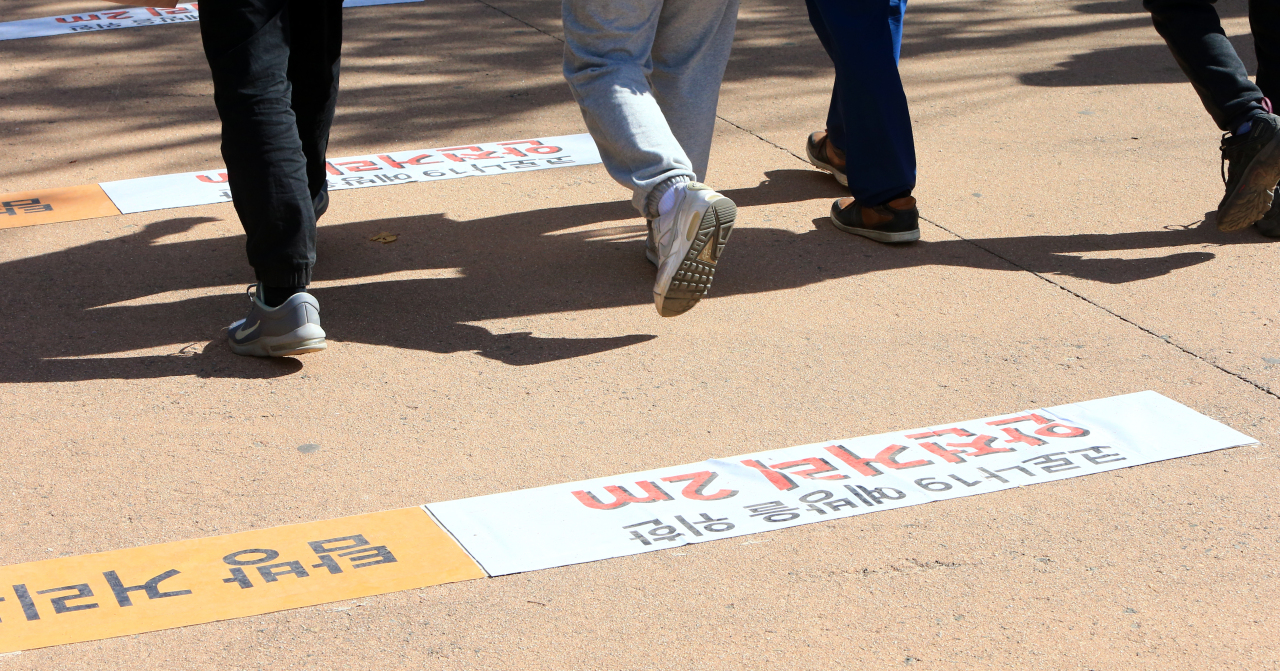
South Korea conducted 5,467 tests Saturday and found 61 positive cases of the novel coronavirus disease, according to the Korea Disease Control and Prevention Agency’s updates, bringing the cumulative number of cases to 22,198.
The smaller case count is likely a reflection of fewer tests taking place on weekends, which lead to fewer cases being discovered. The number of tests carried out per day on Saturdays and Sundays in the last two weeks has averaged around 5,400.
Among the newly confirmed cases, 50 were locally transmitted and 11 were imported. The majority of the local cases -- 44 -- were found in Greater Seoul. The capital region now accounts for nearly half or 48 percent of the nationwide total.
Monday marks two weeks since physical distancing restrictions were eased on Oct. 12. Between Oct. 12-25, 88 cases were diagnosed and 9,691 tests were performed on a daily average.
On the back of a drop in the daily tally, the government said last week that shopping vouchers will be issued to around 10 million people in end-October to boost consumption.
Park Neung-hoo, the Minister of Health and Welfare, said in Sunday’s briefing that the outbreaks in the country were “under manageable control” based on metrics such as case growth and hospital bed occupancy.
“Korea is responding to COVID-19 without significant spread so far,” he said. “But since moving on to the least intensive physical distancing tier, social and economic activities have increased -- which may spawn another surge in cases.”
The ministry’s spokesperson Son Young-rae said in the same briefing that the cases here “have stabilized considerably” and that “less local transmissions are taking place.”
“The capacities for disease surveillance have improved as the pandemic progressed,” he said.
The latest clusters of infections have been traced to schools, nursing homes and shelters.
A private ballet school in Bucheon, Gyeonggi Province, reported 27 cases among students and staffers, with contact tracing still underway. The 13 students confirmed with the disease are second to fifth graders.
At least one resident had died in a nursing home outbreak in Namyangju, Gyeonggi Province, where 49 have tested positive to date. Care facilities, whose residents are at particularly high risk for coronavirus-related morbidity and mortality, have become hotspots for the disease since the pandemic began.
Of the 1,510 infected now being treated in isolation, 53 are severely or critically ill. Last week, the government revised the criteria for severe illness on to exclude patients requiring an oxygen mask. According to the new case definition, Oct. 17’s number of severe or critical cases would be 78, down six cases from 84 by the previous standard.
While the disease is typically milder for young people, a person in his or her 20s developed severe symptoms earlier this month, marking the first such case in Korea in a patient under 30.
No one died in the last 24 hours ending Saturday midnight. The death toll stands at 457 and the death rate at 1.77 percent. The infection is much deadlier for people aged 80 or older, killing nearly 1 in 5.
The number of recoveries reached 23,869, up 35 from the day before. Since late June, the bar for discharging patients has been lowered to improve bed turnover at hospitals. Patients who remain without symptoms for 10 consecutive days after their diagnosis are considered officially recovered and released from medical care.
By Kim Arin (arin@heraldcorp.com)








![[Graphic News] More Koreans say they plan long-distance trips this year](http://res.heraldm.com/phpwas/restmb_idxmake.php?idx=644&simg=/content/image/2024/04/17/20240417050828_0.gif&u=)
![[KH Explains] Hyundai's full hybrid edge to pay off amid slow transition to pure EVs](http://res.heraldm.com/phpwas/restmb_idxmake.php?idx=644&simg=/content/image/2024/04/18/20240418050645_0.jpg&u=20240419100350)






![[From the Scene] Monks, Buddhists hail return of remains of Buddhas](http://res.heraldm.com/phpwas/restmb_idxmake.php?idx=652&simg=/content/image/2024/04/19/20240419050617_0.jpg&u=20240419175937)

![[KH Explains] Hyundai's full hybrid edge to pay off amid slow transition to pure EVs](http://res.heraldm.com/phpwas/restmb_idxmake.php?idx=652&simg=/content/image/2024/04/18/20240418050645_0.jpg&u=20240419100350)

![[Today’s K-pop] Illit drops debut single remix](http://res.heraldm.com/phpwas/restmb_idxmake.php?idx=642&simg=/content/image/2024/04/19/20240419050612_0.jpg&u=)